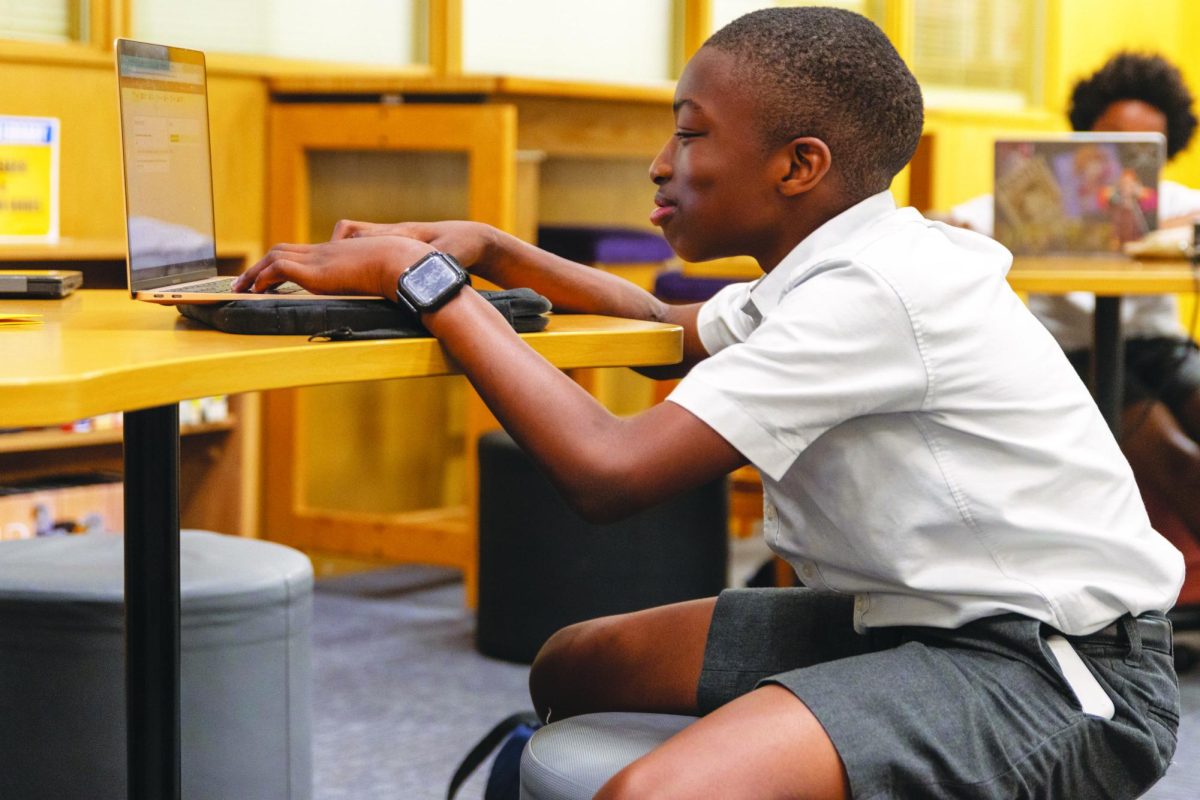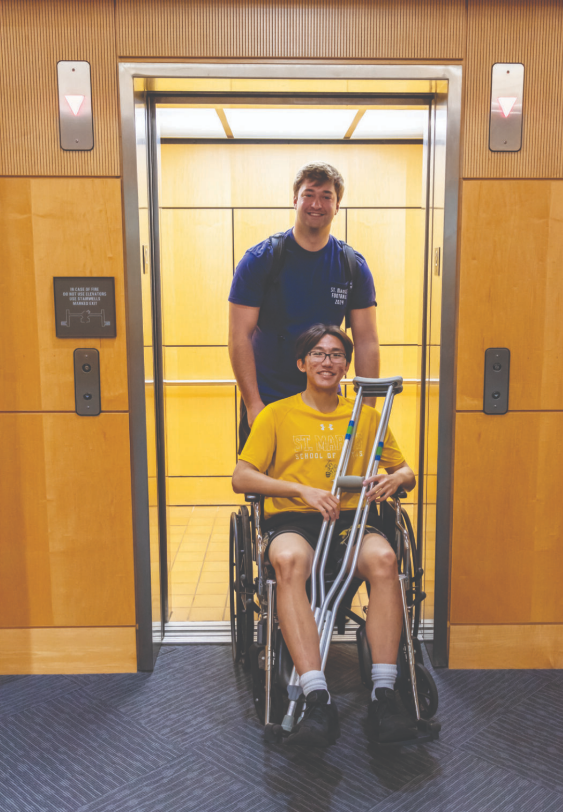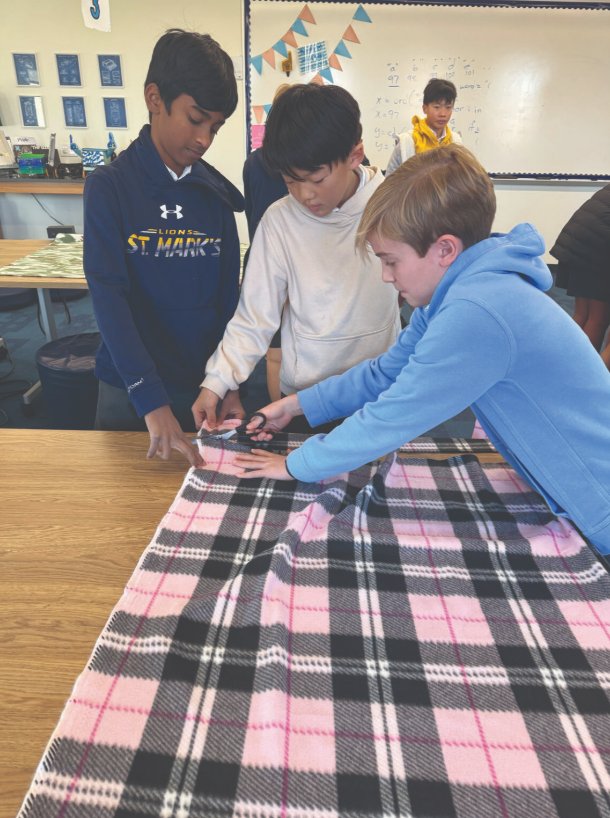Head down and shoulders slumped: signs of someone who may seem weak, uncertain and timid. In the classroom, someone who is unproductive and inefficient. On the athletic fields, someone who is bent over, gasping for air and unstable.
Posture plays an important role in one’s productivity and health. Whether it’s carrying a heavy backpack or hunching over at a desk, there are numerous reasons people have developed bad posture and habits. With bad habits, many of the daily tasks in one’s life decrease in efficiency and yield other consequences.
“When we have good posture, (it) puts less strain on the body allowing us to be productive and efficient,” Upper School counselor Dr. Mary Bonsu said. “A body that’s in pain will have a hard time concentrating.”
Besides just affecting daily life, Bonsu also believes there is a direct link between good posture and performance in class.
“Sitting up straight with your shoulders back makes it easier to perform on math tests and math problems,” Bonsu said. “And then doing math while slumped over can make the problems seem harder than they are.”
The benefits of good posture are not only relevant in the academic and intellectual spaces. Standing up greatly helps athletes in recovery by hepling them achieve good posture.
Most athletes understand the feeling of being out of breath, panting and, at times, even wincing for air. Coaches will always emphasize standing up straight and not bending over, yet young athletes usually overlook their advice.
“Bending over restricts the airflow,” strength and conditioning coach Kevin Dilworth said. “You want to be (standing up straight), so you can open up your lung capacity, get all that oxygen in and give out more carbon dioxide… As much as it doesn’t feel like it, it is helping.”
Posture also affects important muscles for athletic performance. Within the spine, muscles that surround the scapula — the shoulder blade bone — and the thoracic vertebrae — the middle section of the spine -—become internally rotated with bad posture, leaving a concave appearance.
“(This internal rotation) affects the way you do a lot of things from your anterior chain, the front (muscles in your body),” Dilworth said. “This allows everything to be tight. Every young man that I see that has this internal rotation of the shoulders has to take a deep breath (when fixing their posture).”
Moreover, this forward position, in which muscles are fixed, forms a new resting position for one’s shoulders, constricting arm motion.
“We never get it to where that scaption really opens up to feel that true butterfly of the whole scapula, and the way it is shaped (because) it is always enclosed,” Dilworth said.
Because of the underusage in the anterior chain, the posterior chain compensates for it. And by placing more stress on the posterior chain, bad posture affects muscles outside of the back and shoulders. The core of an athlete provides stability and power for almost all movements. Maintaining good posture keeps a healthy tension on the core, while poor posture places stress on other areas.
“If (you have bad posture), you put all the pressure on the lower back and upper scaption,” Dilworth said.
To correct these movements, Dilworth recommends walking with a straight back or sitting up straight in chairs.
These actions also affect a student’s image and attentiveness. Dilworth claims that, on first impression, an individual’s confidence can be judged by someone’s posture.
“Posture, when you first are in the presence of anybody, tells a story automatically (by) the way you carry yourself,” Dilworth said. “When you think of bad posture, you think of an individual who is slumped over, (and you may think): ‘Is he sad? Is something bothering him? Is something weighing heavy on him’?”
Whether someone’s posture or their first impression is bad, Dilworth believes that it is all correctable and improvable over time.
Luckily for athletes, professionals and students, reinforcements are more common than ever. New technology like standing desks and stability balls have been growing in popularity in work settings. These reinforcements all promote standing up straight.
Because of these benefits, Bonsu foresees these improvements being added to the academic space sooner rather than later.
“Body positioning alleviates the workload (on your body), and that’s tied to productivity in the workforce,” Bonsu said. “So, to me, if we see (those additions) in the workplace, then we probably would also see them in the classroom.”






